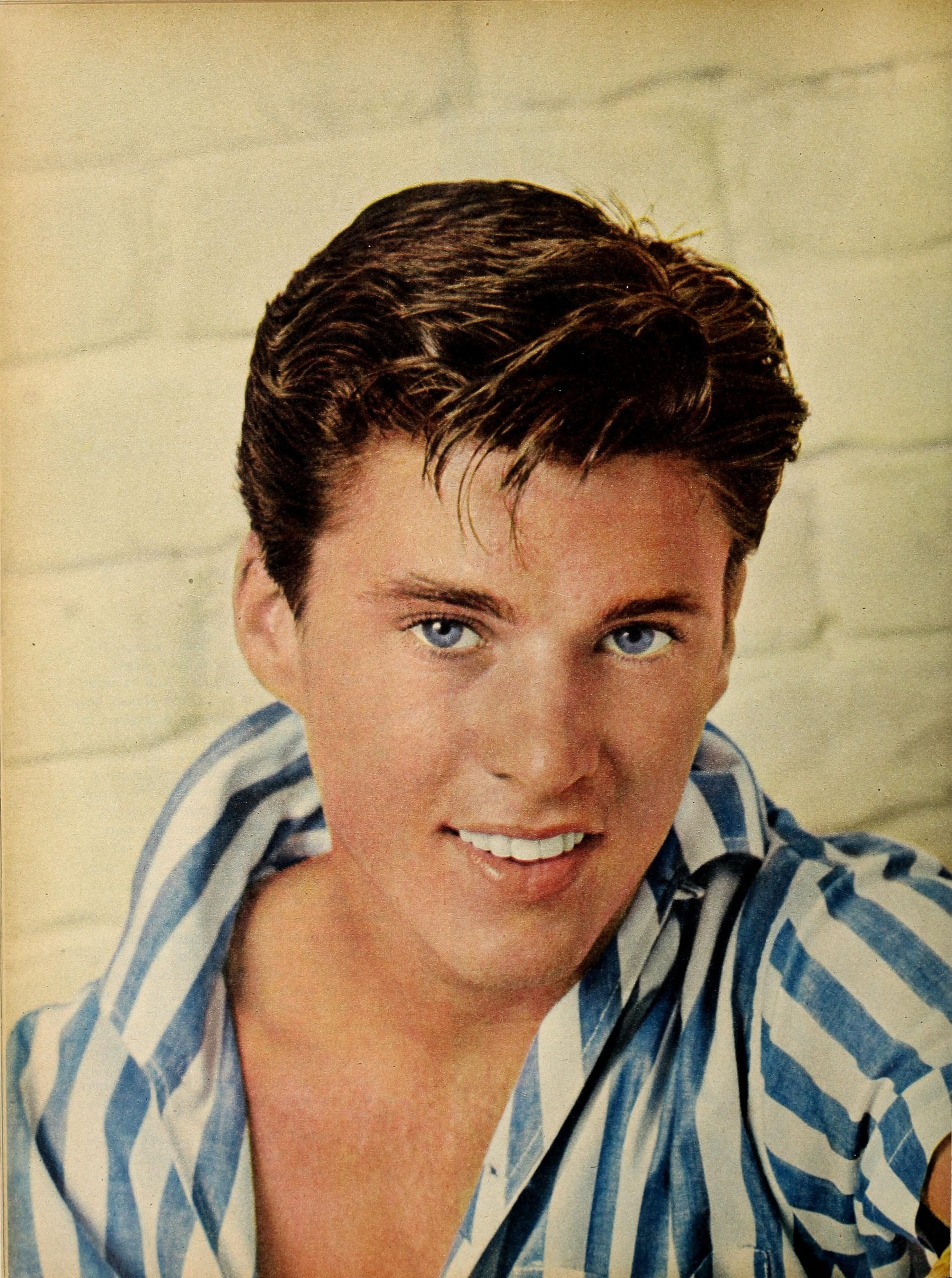Ricky Nelson’s gentle voice captured something the mainstream had only just begun to notice: teenage feelings deserve to be taken seriously. The B-side ballad “A Teenager’s Romance” rode a simple melody to wide attention and helped reshape how young listeners saw themselves.
Nelson was already familiar to millions as a TV presence long before he became a pop star. He brought a quiet charm from the small screen into record shops and radios. The song itself was modest in arrangement. Its strength was the honesty of its words and the way Nelson delivered them — soft, earnest, direct.
The lyric opens with a line that summed up the highs and lows of young love in a single image. It is the song’s emotional center and the chorus that listeners still remember.
A teenager’s romance is fickle or true; a teenager’s romance is red hot or blue.
— David Gillam, songwriter
That line gave voice to feelings many older readers will recall from their own youth: sudden joy, sudden doubt, and the drama of a heart that feels everything at once. Nelson’s voice made the sentiment feel personal. He did not shout. He did not posture. He spoke to listeners as if they were sitting in the same room.
If we’re gonna start a romance, we’ll take our chance.
— Ricky Nelson, performer
Those words point to the song’s central ethic: take the risk. That idea resonated in a new youth culture emerging at the time. Young people were beginning to define themselves by music, clothes, and the freedom to spend money and time on what they loved. A track like this did not just top charts. It helped shape a new sense of identity.
Musically, the record is spare. The backing instruments keep to a gentle rhythm so the lyrics sit front and center. That was part of the plan: let the feeling lead. While some contemporaries moved toward louder, more aggressive styles, Nelson’s ballads put sensitivity on full display. Listeners responded. Radio airplay and record sales followed, and a TV star became a household name in music as well.
The song also showed how pop could validate young emotions. Instead of dismissing teenage infatuation as passing or trivial, the song treated it as real and meaningful. For many families, it was safe listening you could share with a teen at home. For older listeners, it was a reminder of a simpler language of feeling.
Behind the scenes, the choice to release the ballad as part of a single helped cement Nelson’s public image as the easy-going “boy next door.” That image would follow him as he broadened his musical palette in later years. But for a generation, it was this plain-spoken ballad that mattered most.
On radio playlists and in living rooms, the song became a small cultural landmark. It was a touchstone for first dates, shy confessions, and the long slow learning of what love felt like when you were young. For many fans now in middle age and beyond, the record opens a door back to the nervous hope of being a teenager — a time when one short verse could change everything and when choosing to take a chance on love felt like stepping into the future
Video
Lyrics: A Teenager’s Romance
Bah, bah, bah, but
Bah, bah, bah, but
Bah, bah, bah, bah. bah. bah, but
Do do do do do do
Bah, bah, bah, but
Bah, bah, bah, but
Bah, bah, bah, bah. bah. bah, but
A teenager’s romance is fickled or true
A teenager’s romance is red hot or blue
You’re either in misery or high on a crest
A teenager’s romance is like all the restThey tell us we’re different
We haven’t the right
To decide for ourselves, dear
What’s black and what’s whiteKeep saying you love me
And they’ll look upon
A teenager’s romance
That goes on and on[Instrumental Interlude]
They tell us we’re different
We haven’t the right
To decide for ourselves, dear
What’s black and what’s whiteKeep saying you love me
And they’ll look upon
A teenager’s romance
That goes on and onA teenager’s romance
That goes on and on
